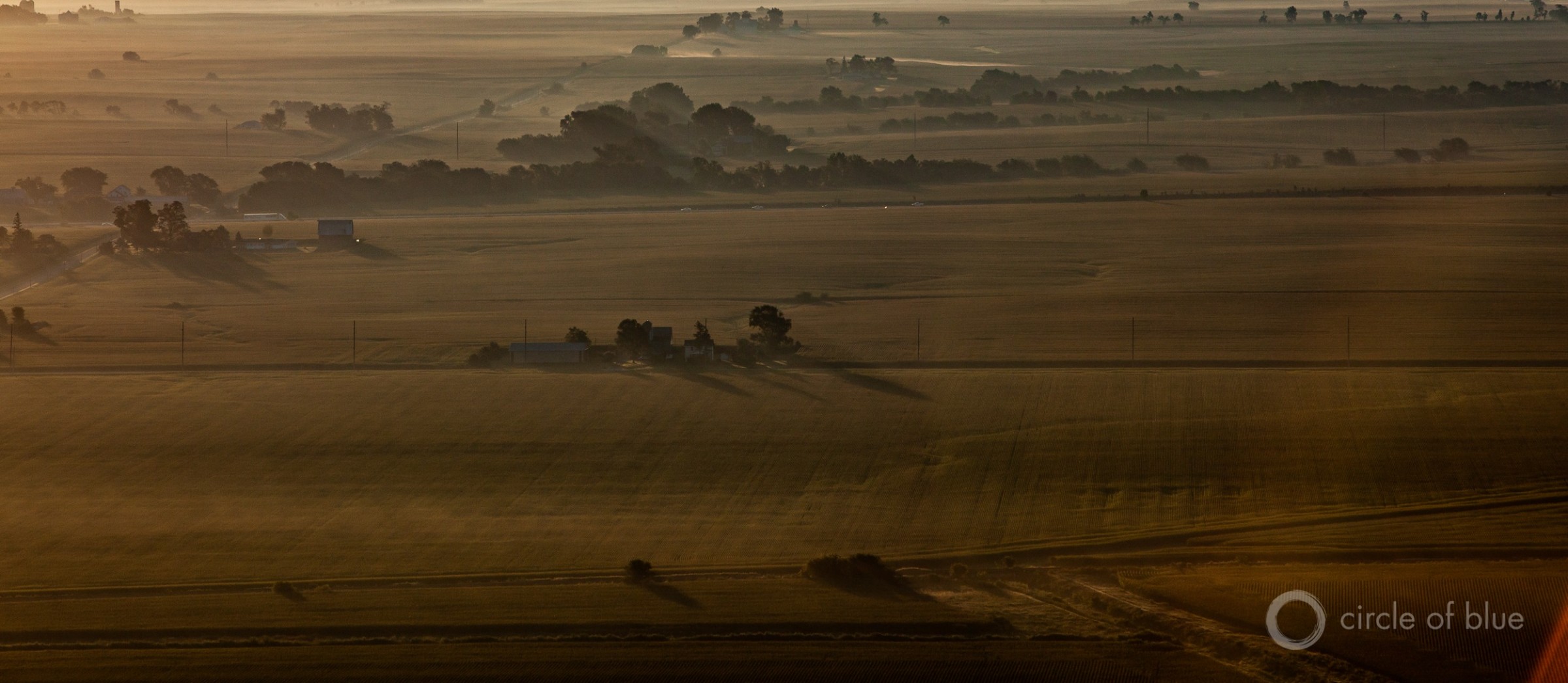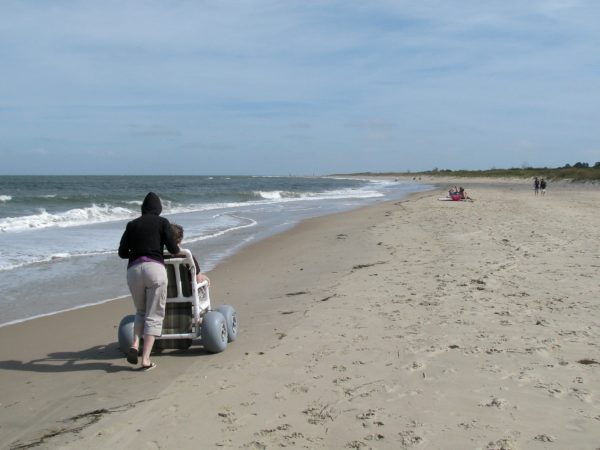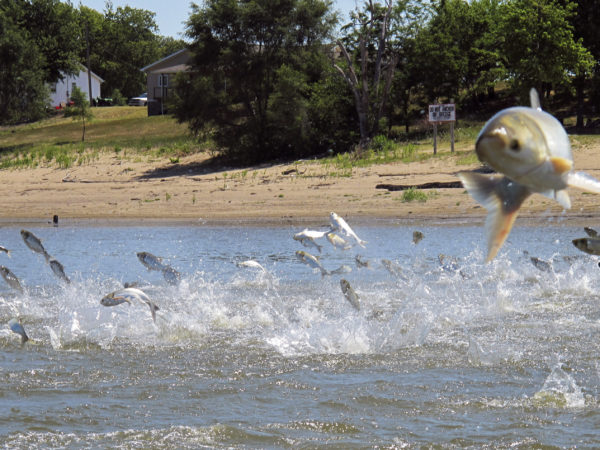
In the early 2000s a movement to address the plight of the heavily polluted and long neglected Great Lakes started to gain traction.
The goal was to bring the gravitas of the federal government to the issue and in 2004 President George W. Bush signed an executive order declaring the lakes a “national treasure.” An interagency task force was established to bring together the disparate efforts of various federal programs who had been working independently on Great Lakes issues.
In 2009, the often asked “who’s in charge” of restoring the lakes question was answered. Then President Barack Obama’s U.S. Environmental Protection Agency (EPA) was charged with coordination and oversight of the sprawling multibillion dollar Great Lakes restoration program that continues today.
Groundwater: Who’s in charge?
Fast-forward to 2024 and that “who’s in charge” question could apply to the nation’s vast groundwater reserves that are at or nearing a crisis.
In August 2023, the New York Times published the results of a data investigation on groundwater that said “overuse is draining and damaging aquifers nationwide.” The outcome?
“A wealth of underground water helped create America, its vast cities and bountiful farmland,” reported the Times. “Now, Americans are squandering that inheritance.”
At a glance, it’s easy to say that’s just an issue for western states like California and Arizona, where overuse, drought and climate issues threaten aquifers. But Great Lakes states aren’t immune, perhaps best-exemplified by Chicago suburbs in northeast Illinois that are clamoring for Lake Michigan water.
Great Lakes Now canvassed the region to get an answer to the question: who’s in charge?
U.S. Geological Survey
The United States Geological Survey (U.S.G.S.) serves as a scientific resource and is the record keeper for the nation’s groundwater. It knows where it is, monitors and analyzes water use data in the U.S.. However, the agency does not regulate, that’s left to the states and other federal agencies.
“In the Great Lakes region, each state manages groundwater differently and may focus on different constraints,” Howard Reeves told Great Lakes Now. Reeves is a team leader in the Lansing, MI office of the U.S.G.S.
Reeves declined to comment when asked if states, municipalities and the general public are aware of groundwater shortage threats, referring Great Lakes Now to state and local leaders.
Michigan
Ask a Michigander for the source of the water drawn from the tap and you wouldn’t be surprised if the answer was the Great Lakes. The state is virtually surrounded by the lakes and connecting channels.
But 44% of people secure their water from groundwater, which is roughly the volume of Lake Huron thus often described as the 6th Great Lake. And four state agencies have some responsibility for groundwater: the Department of Environment Great Lakes and Energy (EGLE) plus the departments of Natural Resources, Agriculture and Rural Development and Health and Human Services.
“EGLE has the primary responsibility for regulating large quantity water withdrawals,” communications manager Hugh McDiarmid told Great Lakes Now. And it collaborates with the other agencies as groundwater issues impact their areas of responsibility, he said.
One of the challenges Michigan faces is that its aquifers are “poorly mapped and understood,” McDiarmid said, and the agency is currently working with Western Michigan University to update Michigan’s glacial geology mapping in order to better understand aquifer sustainability and depletion issues.
Illinois
The groundwater crisis spotlight in the Great Lakes region now is Illinois.
The city of Joliet is a distant Chicago suburb well outside the Great Lakes basin and it has a water problem looming in the near term. The aquifer it draws from will no longer be able to supply the city of 150,000 by 2030.
The solution? Joliet and Chicago struck a deal to tap Lake Michigan 30 miles away. Chicago will provide Joliet with water via a constructed pipeline in one of those purported win-win situations. Joliet gets the water it needs, and Chicago gets a much needed source of revenue.
But eyebrows were raised around the region as Joliet is outside the Great Lakes basin and isn’t automatically entitled to draw from Lake Michigan. Those are the terms of the Great Lakes Compact, the eight state agreement that minimizes diversions.
But the compact has exceptions and one is that Chicago may divert water based on a Supreme Court ruling. The big city on the lake can sell and ship water outside the region as long as it stays within certain limits.
But Joliet isn’t the only northeast Illinois city with an aquifer problem. Nine other nearby communities are in the same at-risk situation for water as Joliet, said Illinois Department of Natural Resources (DNR) Steve Altman. Altman manages the DNR’s Division of Resource Management.
All nine communities that requested and were granted a Lake Michigan allocation and are now working on developing the infrastructure needed to deliver the water, Altman said. Part of the process is that applicants must demonstrate that they have conservation programs.
The approval process to tap Lake Michigan by the Illinois communities based on the Supreme Court ruling is streamlined compared to applicants like Waukesha, Wisconsin. Waukesha’s path to approval was decades in the making, it had to agree to return its allocation to Lake Michigan as treated wastewater and it required approval of all eight Great Lakes states.
So, who’s in charge?
Who’s looking at groundwater resources 20, 30 or 50 years out? Are we solely focused on getting water now, only to worry about the future later?
Great Lakes Now posed the “who’s in charge” question to Rachel Havrelock, an ex-Detroiter who grew up with a fascination of the Detroit River as seen from Belle Isle. Havrelock directs the University of Illinois at Chicago’s Freshwater Lab.
“I would say that the United States lacks such an institution or site of responsibility,” said Havrelock. “Yes, states are formally responsible but they are tasked more with using water to promote economic growth.”
Havrelock continued to cite Michigan’s record on approving groundwater withdrawals for bottled water.
Havrelock declined to assign blame to any one entity for lagging groundwater management or the dearth of forward-looking planning.
Instead she said: “we didn’t get to the point of collapsing aquifers randomly, but rather due to an ethos that confers all the ‘raw water’ desired by industry, development, and industrial agriculture to them without limit.”
Catch more news at Great Lakes Now:
After 10 million pieces of beach trash, Chicago advocates push for sustainable packaging
Storied Two Hearted River gets 21st century update in new book
Featured image: Illinois fields catch the first rays of daybreak. Runoff from farm fields contributes to rising nitrate levels in groundwater. Photo © J. Carl Ganter/Circle of Blue




